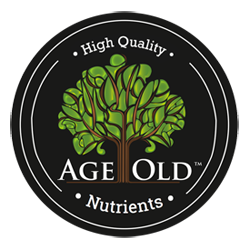ORGANICS AND SYNTHETICS (AN UNBIASED LOOK): PART 2
Here is Part 2 of Organics and Synthetics (An Unbiased Look). In Part 1 we explored an unbiased breakdown of some of the more notable pros and cons attributed to organics. In Part 2, we will focus on the pros and cons of synthetics.
Synthetic Plant Food Pros:
- Immediate availability for fast results– This is one of the main reasons that have lead to the overall popularity of synthetic fertilizers. Elements in these forms exist as readily absorbed ions, leaving little doubt as to when and how much of the nutrients will be available to the plant. Synthetics can also be manufactured to behave as a slow-release nutrient source if desired.
- Complete batch consistency– Synthetic fertilizers are manufactured in factories with carefully formulated batches, which are developed to create specific concentrations of the desired elements. Most manufacturers use due diligence and lab testing to ensure that what is in the final packaged product is the same every time.
- Huge product variety: from general use to specific supplements– Manufactures of synthetic fertilizers have the ability to design a mix to fit any type of request. Products can range from complete general use formulations to more element specific ones, which can address a single elemental nutrient need. Growers that use these products have the ability to apply a specific nutrient at a desired rate to improve plant growth and avoid nutrient deficiencies.
- Easily application– Many synthetic/inorganic fertilizers are in liquid form making the mixing and applying of the products relatively easy. Products are often highly concentrated, allowing the grower to use smaller amounts over larger areas. Dry, granular versions of these products can be easily distributed in a garden by hand (wear gloves!) or with a broadcast spreader.
Synthetic Plant Food Cons:
- Can lead to salt accumulation or build-up– Unlike their organic counterparts, synthetic fertilizers are part of a soluble salt compound. When over or improperly used these salts can accumulate within the rooting medium, leading to unwanted problems such as nutrient lock out. The users of synthetics often find it imperative to flush or leach the rooting medium to get rid of the excess salt. This is more easily done in container growing compared to soil growing where leaching is much harder to do.
- Potential for creating environmentally unsafe runoff – When certain synthetic forms of elemental nutrients enter into public water ways or ground water, they have the potential to cause severe ecological problems. Nitrate and phosphate runoff results in water that is unable to sustain a normal ecosystem and can be potentially harmful when consumed by animals and humans.
- Limited resources– For lack of a better word, organic fertilizers are grown. Where, in contrast, synthetics are most often mined from within the Earth and then manufactured. This inherently makes them unsustainable to a certain extent. As their use and popularity spreads, the availability will inevitably decline.
- Potentially harmful products– As the name implies, synthetic fertilizers are manufactured in a number of ways. Many of these processes incorporate the use of harsh and hazardous chemicals to help create and maintain the stability of the formula. This, in turn, results in products that are not only effective, but potentially harmful if used in an improper or unsafe fashion. Synthetic fertilizers should always be handled and mixed carefully, with proper safety gear, and they should never be left where a young child can easily access it. Some products can irritate the skin, release fumes and, when consumed, even lead to real medical emergencies.
As the debate between organic and synthetic/inorganic fertilizers rages on, it is important to remember that the issue is not nearly as black and white as so many make it out to be. Each side has its share of pros and cons, ups and downs. As is true with so many aspects of growing, there is no easy, clear cut answer to the question of what is right and what is wrong. In the end, each individual grower must find not only what works well for them, but is also the most productive approach to their garden. A solution many growers have found successful is to use a well-balanced blend of organic and synthetic products. The organic products help create and maintain a healthy, biologically active environment in the root zone where the synthetic products promote adequate and reliable soil fertility, resulting in a plant that is nutritionally sound and healthy. This approach, when done thoughtfully, can create vigorous and sustained growth both within the rooting medium and above.


